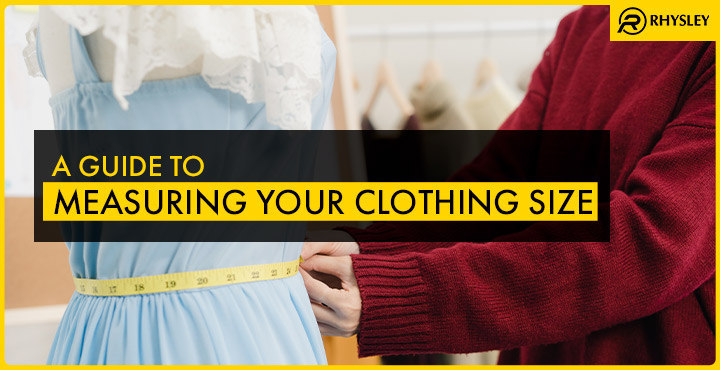
A Guide to Measuring Your Clothing Size
Getting the right clothing size matters. Clothes that fit well look better, feel more comfortable, and make dressing up easier. When shopping online, it helps to know your body’s exact measurements. Size tags don’t always match across different stores, so learning how to measure clothing size at home can save time and trouble. Taking accurate body measurements for clothes lets you skip the guessing game.
What is a Clothing Size Guide?
A clothing size guide helps people match their body measurements with the size labels used by brands. These guides list chest, waist, hip, and other body part measurements under each size—like Small, Medium, Large. Instead of relying on a number or letter, looking at the body measurements in the guide gives a better idea of what might fit.
Why Clothing Sizes Vary Across Brands and Regions?
Clothing sizes don’t follow a global rule. One brand’s Medium could feel tighter than another’s. Regions also use different systems—UK sizes won’t always match US sizes. This is where a body measurement guide for clothes can help. Rather than choosing by label, measuring your body and comparing it to a brand’s chart works better.
Essential Tools for Measuring Your Body
Only a few tools are needed. A soft, flexible tape measure is the main one. A mirror helps when measuring alone. A notepad or phone can record numbers. Good light makes it easier to read the tape. These tools to measure clothing size are easy to keep at home.
How to Use a Garment Measurement Chart Effectively?
Some online stores include a garment measurement chart next to their size guide. Instead of listing body sizes, these charts show the actual measurements of the clothes. To use them, compare your own measurements to the ones shown. For example, if your chest is 38 inches, and the chart says a shirt has a 40-inch chest, you know it will have a bit of room.
Measuring Your Chest, Waist, Hips, and Inseam
Start with the chest. Place the measuring tape around the fullest part, usually across the nipples. Keep it flat and snug but not tight. For the waist, measure the narrowest part—usually just above the belly button. Hips come next. Find the widest part of your bottom and wrap the tape around. For pants, check the inseam. Run the tape from the inside top of the leg to just below the ankle. This body measurement guide for clothes helps gather the right numbers.
Read More : How Many Types of Clothes Are There? | Different Types of Pants for Women
Tips for Accurate Body Measurements for Clothes
Wear fitted clothes or stand in underwear. Stand straight but relaxed. Don’t hold your breath or suck in. Ask someone to help if possible. Keep the tape level all the way around your body. Only measure once a month or when weight changes. These steps lead to accurate body measurements for clothes.
How to Read Different Clothing Size Charts
Every store’s size chart looks a little different. Some use centimeters, others use inches. Some group sizes by number, others by letter. Reading charts carefully means checking all parts—chest, waist, hip, inseam. Pick the size that matches the most areas. This avoids returns and saves time.
Clothing Size Tips for a Perfect Fit
Pick clothes that fit the largest part of your body and get others tailored if needed. Go for stretchy fabrics if between sizes. Read customer reviews for comments on fit. Follow wash instructions to avoid shrinking. These clothing size tips work across styles and brands.
Using Your Measurements to Shop Online Confidently
Use your notes to check the store’s size chart before buying. Look at product descriptions. If a shirt is labeled “slim fit” and your measurements are close to the edge of a size, go one size up. With numbers on hand, it’s easier to trust choices. That’s one way to how to ensure a perfect fit when shopping online.
Common Pitfalls and How to Avoid Them
Don’t skip measuring and just choose your “usual” size. Avoid guessing based on how the model looks. Pay attention to return rules in case the item doesn’t fit. Read sizing reviews—some brands run small, others big. When possible, order two sizes and send one back.
FAQs
Question 1 : How do I measure my clothing size at home?
Answer : Use a soft tape. Measure chest, waist, hips, and inseam with it snug, not tight. Stand naturally. Note the numbers.
Question 2 : What tools do I need to measure my clothing size?
Answer : Use a flexible measuring tape, a mirror for angles, and something to record the numbers like a phone or notepad.
Question 3: How can I ensure a perfect fit when shopping online?
Answer : Match your measurements with the size chart. Read product notes and reviews. Avoid brands that don’t show measurements.